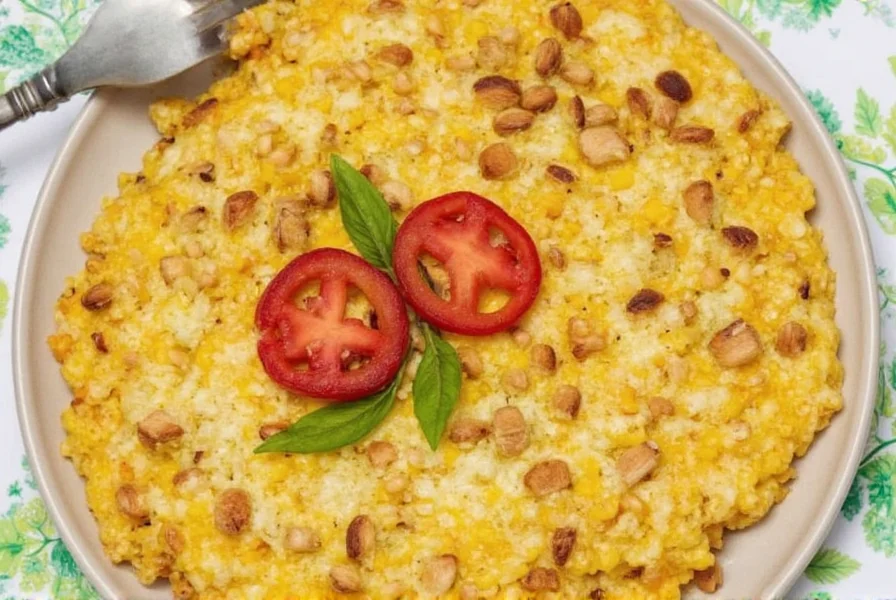Authentic mangú, the beloved Dominican breakfast dish, relies on just 5 essential ingredients. Here's what you need to know about each one:
Key Mangú Ingredients
| Ingredient | Purpose | Substitute Options |
|---|---|---|
| Green Plantains | The base of mangú; provides starchiness and mild flavor | Unripe bananas (not ideal), frozen green plantains (acceptable if fresh isn't available) |
| Garlic | Adds depth and a savory kick | Minced garlic (fresh preferred), garlic powder (use sparingly) |
| Onion | Brings natural sweetness and aroma | Shallot or leek for a milder flavor |
| Olive Oil or Butter | For richness and creaminess | Coconut oil or vegetable oil |
| Salt | Enhances overall flavor | Sea salt or pink Himalayan salt |
The Secret Ingredient: Garlic Water
Some Dominican cooks swear by adding the water used to boil garlic back into the mash. This subtle trick enhances the garlicky flavor without overpowering the plantains. Don't skip this step if you're aiming for authenticity!
Choosing the Right Plantains
Since green plantains are the star of mangú, selecting the right ones can make or break your dish. Here's what to look for:
| Quality Indicator | Description | Why It Matters |
|---|---|---|
| Color | Completely green, no yellow or black spots | Yellow indicates ripening — too sweet and starchy for mangú |
| Texture | Firm to the touch, like raw potatoes | Softness means overripe — avoid for authentic mangú |
| Size | Medium to large (6–8 inches) | Bigger plantains are easier to peel and cook evenly |

Frequently Asked Questions About Mangú Ingredients
What are the 5 essential ingredients for authentic Mangú?
The five essential ingredients for authentic Mangú are: 1) Green plantains (the base), 2) Garlic (for that signature flavor), 3) Onion (adds sweetness and aroma), 4) Olive oil or butter (for creaminess), and 5) Salt (to enhance all flavors). While water is also necessary for boiling, these five ingredients form the core of authentic Dominican Mangú.
Can I use yellow (ripe) plantains instead of green ones for Mangú?
No, authentic Mangú requires green (unripe) plantains. Yellow or ripe plantains are much sweeter and have a softer texture that won't give you the proper starchy, neutral base needed for Mangú. Using ripe plantains will result in a sweet, mushy dish that's completely different from traditional Mangú.
Is Mangú naturally gluten-free?
Yes, traditional Mangú is naturally gluten-free since its main ingredient is plantains, which are gluten-free. Just be careful with any additions or toppings you use - if serving with traditional sides like salami, check that these are also gluten-free if you have dietary restrictions.
What can I substitute for fresh garlic in Mangú?
While fresh garlic is preferred for the best flavor, you can use 1/2 teaspoon of garlic powder per clove of fresh garlic called for in the recipe. Alternatively, pre-minced garlic from a jar works in a pinch, though fresh always provides superior taste. The 'garlic water' technique (boiling garlic with the plantains and using that water for mashing) is difficult to replicate with powdered garlic, so try to use fresh when possible for authentic results.
Can I make Mangú vegan?
Absolutely! Traditional Mangú is vegan when prepared without butter. Simply use olive oil or coconut oil instead of butter, and you'll have a completely vegan dish. When serving, skip traditional sides like salami and fried cheese, and instead pair with avocado, black beans, or sautéed vegetables for a delicious vegan meal.










 浙公网安备
33010002000092号
浙公网安备
33010002000092号 浙B2-20120091-4
浙B2-20120091-4